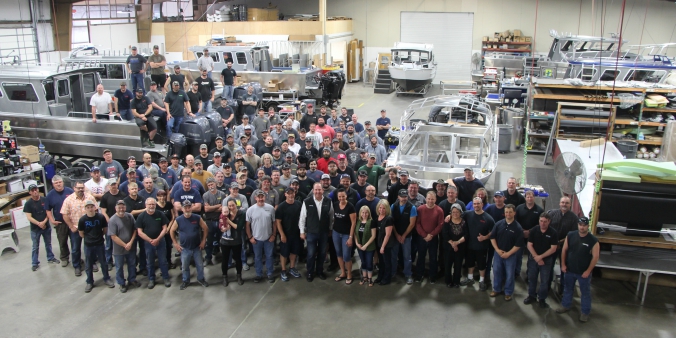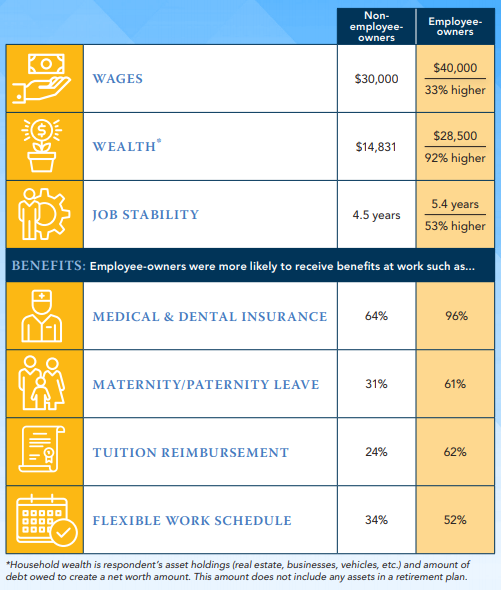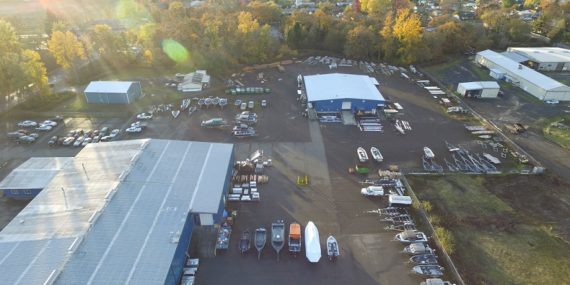How a rural Oregon boat manufacturer made the bold decision to convert to an ESOP

Allison is an Assistant Vice President of Underwriting for Commercial and Industrial Loans at Beneficial State Bank, based in Northern California.
Did you know that ESOPs hold total assets of nearly $1.3 trillion, and cover more than 14 million participants in the US? That’s nearly equal to the number of students who enrolled in public colleges in America in 2016.
But what is an ESOP?
Employee ownership comes in many different forms, such as worker cooperatives, direct purchase plans, stock-based compensation, and the employee stock ownership plan (ESOP). We dug into one form, the worker cooperative, in our blog posts here and here. Today, we’re looking at ESOPs.
Think of an ESOP like a retirement plan or separation benefit – but with no employee contribution. A separate trust acquires some portion, or all, of the company and holds the stock for the benefit of the employees. The company appoints a trustee to administer the plan and employees receive shares of the company based on some formula of relative pay, length of employment (among other factors) and the company’s yearly financial performance. The value of those shares is determined by an annual independent valuation of the company.

Typically, employees cash out the shares in their accounts upon retirement or leaving the company (which usually requires some period of vesting). Unlike a worker co-op, employees don’t have direct and equal ownership of the company with one equal vote. ESOPs can be a great option as an exit strategy for departing owners of a privately-owned company to sell their shares back to employees.
We’re big on employee ownership here at Beneficial State. We believe in economic prosperity for all, and one of the best ways to achieve that is by distributing the concentration of wealth in our country and creating more avenues for people to achieve upward mobility through ownership. There is a strong link between employee ownership and better financial well-being. Employee owners show higher wages, wealth, and job stability (see chart to the right).
Understanding the benefits of an ESOP, one of Beneficial State Bank’s long-time clients, North River Boats, converted to this form of ownership last year. I spoke at length with the owner, Brent Hutchings, to discuss what drove him to make this decision and how the change is impacting employees at his company.
North River Boats’ story
North River Boats is one of the largest heavy-gauge aluminum boat manufacturers in the US and one of the fastest-growing businesses in Douglas County, Oregon. The company has been a Beneficial State Bank client since April 2014, when Brent received two loans to purchase the company from a private equity firm, saving 70 local jobs in rural Oregon. North River Boats was emerging from an extended receivership which had put these good jobs at risk. Through the USDA’s Rural Development Business & Industry Program, which bolsters private credit structure by guaranteeing loans to rural businesses, Brent was able to secure two loans for $2.7 and $1.84 million from Beneficial State Bank. The funds were used to consolidate its four locations into one 88,000-square foot facility, and to hire dozens of former employees and new staff. The company now provides 135 living wage jobs.
“The loans that Beneficial State made to North River Boats to assist me in buying the company from a private equity owner saved 70 jobs by ensuring the business will stay in Roseburg,” says Brent.” This partnership helped avoid the near-certain outcome of being sold to a geographically distant strategic buyer, who would likely have closed this location. Now, we are able to offer excellent jobs to people in a low-income, economically depressed region that has limited business formation and very few job opportunities.”
Since 2014, North River sales have doubled and Brent has shown a strong commitment to his employees by offering living wage salaries, competitive health insurance and other benefits, and 401(k) retirement accounts with a company match. In addition, North River Boats has contributed to a significant decrease in the unemployment rate in Roseburg (from 12.2% in January 2013 to 5.2% at present).
In 2016, Brent began considering a partial exit strategy. He was inspired to implement an ESOP for two reasons: 1) He wanted to achieve some personal financial diversification on his large personal investment in the company; and 2) he wanted to accomplish the first goal without putting the business, or its employees, at risk. According to Brent, “the folks who built North River Boats and who comprise the ownership group today are wonderful people who are really committed to the customer and to one another.” For this reason, Brent was not interested in a private equity transaction or selling to another owner where there would be a different set of priorities and a different agenda.

With the help of Beneficial State Bank, North River Boats closed its first ESOP transaction in April 2017 for eligible employees to own 33% of the company. The plan was retroactive to January 2016, and the first vesting occurred in January 2018, at which point more than 100 employees qualified for the program.
When asked why he chose to work with Beneficial State Bank over other lenders, Brent’s answer was simple. “Beneficial State’s focus on mission, and not just the interest that the Bank earns on a successful loan, but the impact it has on the community really resonated with me. It was for all the right reasons. I think having a cultural fit in a business relationship is very important and the time [the Bank] took to really understand our business and our needs resulted in a superior financial structure that gave us the flexibility we needed.”
The impact on employees
Post ESOP, Brent characterizes employee morale at the company as very high. Per Brent, “I do not think morale improved as a result of the ESOP but I think it was justification for doing an ESOP. I have heard that the most successful ESOPs look like an ESOP before you implement them and I think that is descriptive of North River. The employees [functioned] like owners before the transaction, so it was only fitting that they become actual owners.”
When considering employee ownership options, or any financial decision, there are always two sides. When an ESOP does well and its stock value increases, the company faces a higher repurchase liability for departing employees. This is great for the departing employee, but it means a higher cost to the company and the remaining employees when a transaction occurs. Brent notes “The same thing is true if you think ‘well, now that we are employee-owned let’s give everyone a huge raise.’ That feels good in the short-run but is like the immediate gratification of eating dessert first – it is not in your long term best interest to do it. You’re really on both sides of the table as an employee for the first time.”
North River Boats has its own lean methodology for implementing employee ideas and continuous improvement, which started three years prior to the ESOP. Post-ESOP conversion, Brent believes the program has been pumped up by the fact that employee ideas now have a direct effect on the value of their ownership in the company. Recently, an employee suggested replacing all of the factory lighting with energy-efficient, cost-efficient, LED lighting. The company implemented the employee’s idea and the next month’s electricity bill dropped by about 20%.
At North River Boats’ quarterly luncheons, Brent not only celebrates the implementation of these ideas, but he also explains what those cost savings mean for each person’s ESOP value. “It is like watching your 401(k) balance grow. There is delayed gratification in any retirement vehicle, but each employee can meaningfully improve his or her retirement through the ESOP, at zero cost to the employee.”
This blog post reflects the author’s personal views and opinions, and does not represent the views and opinions of Beneficial State Bank and/or Beneficial State Foundation.



